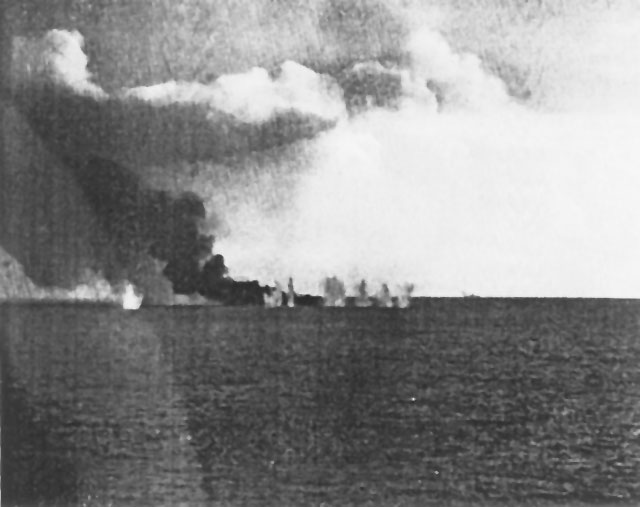First of all - it was Britain which put a real emphasis on radar usage starting in pre war years. Japanese started production of radars, probably after they became aware of it's wide usage in Royal Navy, in 1941. Ended works in the autumn of 1944. The key wasn't antennas but magnetrons which they started to produce too late. Magnetron - device which originally came from Japan itself... Talk about irony. But they put a lot of attention on radar equipement development and closed the gap pretty fast. But as the war ended radar fire control devices you could see aboard Yamato lagged a bit from what you could find aboard Iowa class battleships at the same time but the gap wasn't as wide as many think.
Well, it was. Yamato even in the end had three types of radar onboard and not one of them was a proper fire control radar. All were search or warning sets broadly comparable in performance to British warning sets from 1941 to 1942. The type 22 surface search radar set on Yamato, with its distinctive trumpet antenna can assist optical surface fire control as the British and Germans sets could also do in 1941. But it lacked adaquate range and directional resolution to be the sole fire control source for blind fire comparable to what the British could do in 1942. Yamato never acquired any sort of radar fire control for her AA artillery even in the 1945. AFAIK no form of radar fire control for shipboard AA weapons was ever deployed on any scale in the Japanese navy. This puts the Japanese naval radar development in 1945 behind the British and American radar development of 1942, or German development of late 1943. The Japanese also never developed anything to enable their ship-board fire control mechanical computer to easily receive input from Radar, which both British and Americans had done. So even if Japanese had produced suitable radar sets, their AA fire control system was not ready to efficiently utilize radar input. The Radar warning sets onboard Yamato were copied from German sets from 1943.
Basically by 1943, both British and American battleships would be able to engage an enemy battleship with surface gunfire in condition of zero visibility. Japan never acquired that ability during the war. Both British and American battleships would also be able to throw up effective medium AA barrages in zero visibility, again Japanese naval vessels never acquired that capability.
Japanese radar development also failed to be well organized or to promptly utilize all the appropriate resources available in Japan. Take for example the Yagi antenna. It was the first practical and efficient short wave transmitting and receiving antenna, and it was invented in Japan by professor Hidetsugu Yagi back in 1926. It was widely used in telecommunication in 1930s and in radars right from the beginning. (Chinese types 052C abd 052D sports prominent Yagi arrays abft the funnel as part of its anti-stealth radar, BTW) But the Japanese radar development teams appearently never heard of it at the beginning of 1942. They were puzzled by references to "Yagi antenna" in British technical documentation captured in Singapore, and commissioned a naval salvage effort on sunken British warships to find out just what a "Yagi antenna" was. Meanwhile professor Yagi was alive and well in Tokyo and his offers to assist in radar development being turned down.
Last edited:


